Tesla has unveiled its newest and most advanced ‘car’ yet.
But the Tesla Cybercab is not a car for you to drive in the normal sense of the word, it is an autonomous taxi that will transport people and take them into the future.
During its UK presentation this week, Tesla said Cybercab will make electric transport “democratised, affordable and fully autonomous”.
Running until December 8 at Westfield London, Cybercab will tour Europe before entering production in 2026.
The specific details, in classic Tesla tradition, have yet to be worked out, but we’re told that the United States is the first destination where the Cybercab will be used in public spaces.
Tests of self-driving taxis are already underway, including the famous Waymo self-driving vehicles in San Francisco.
Tesla Cybercab is not a car for you to drive in the normal sense of the word, it is an autonomous taxi that will transport people and take them into the future. During the UK presentation, Tesla said Cybercab will make electric transportation “democratized, affordable and fully autonomous.”
The Cybercab is “a fully autonomous robotaxi designed to deliver premium, individualized point-to-point electric mobility for everyone.”
The two-seater taxi makes Tesla and ride-sharing “more accessible and affordable” because making transportation “accessible to everyone is essential for the future,” Tesla says.
The Cybercab will have smart calling and automatic parking, and “you can rent it for as long as you need: a quick trip or a whole day,” the Elon-Musk brand told reporters at the inauguration.
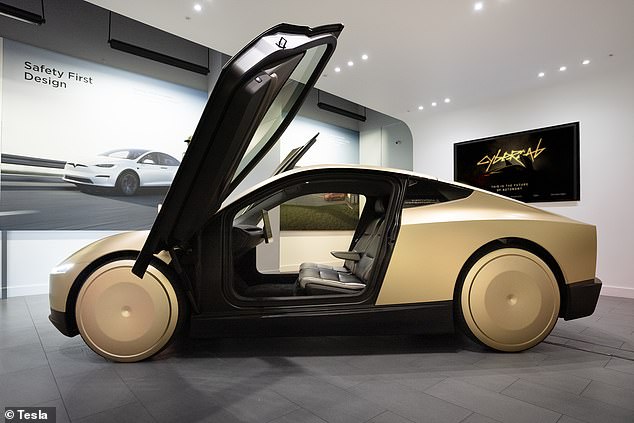
Cybercab, which runs until December 8 at Westfield London, will tour Europe before entering production in 2026.
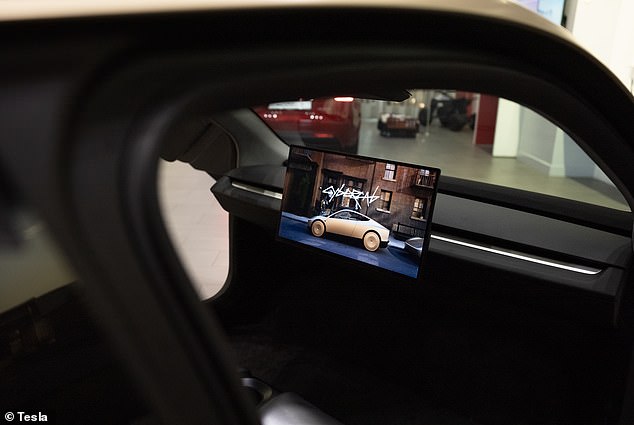
The interior is typical Tesla minimalism, with just two seats and a large horizontal touchscreen. Being completely autonomous, there are no pedals or steering wheel
When Musk first revealed the Cybercab at the ‘We, Robot’ event in Los Angeles on October 10, where the Robovan and the humanoid robot Optimus (which Kim Kardashian recently modeled to much backlash) were also first seen, he said that you could buy one in the US starting in 2026.
The Cybercab is a gold, ultra-sleek, and arguably fancier version of the Model 3.
It’s square and more angular, with scissor doors and a single light bar front and rear.
Inside it is typical Tesla minimalism, with only two seats and a large horizontal touch screen.
Being completely autonomous, there are no pedals or steering wheel in sight.
Wireless charging is a key feature.
Tesla previously filed a patent for wireless charging pads in September, although it is unknown how it will work and you will be able to greet the Cybercab through the Tesla app.
The taxi, suitable for bicycles, can carry two carry-on suitcases and two checked suitcases.
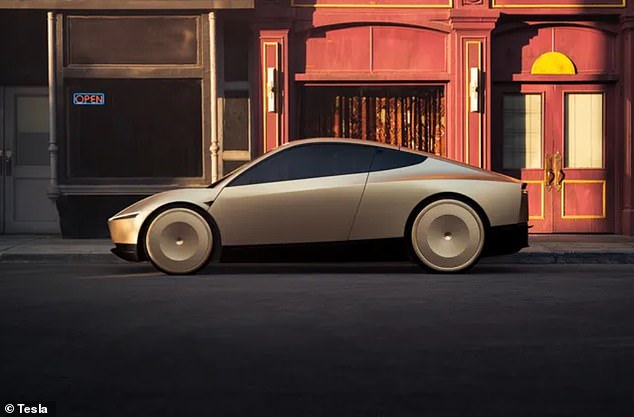
The Cybercab is a gold, ultra-sleek, and arguably fancier version of the Model 3.
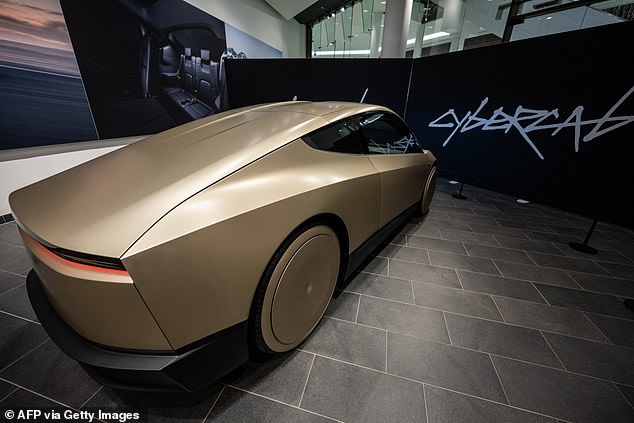
It’s square and more angular, with scissor doors and a single light bar front and rear.
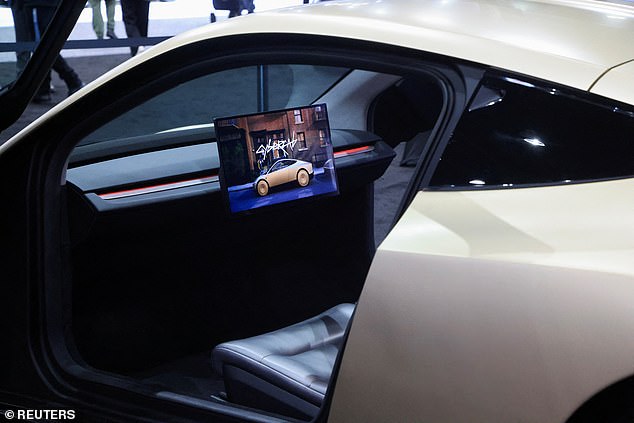
Suitable for bicycles, the taxi can carry two carry-on suitcases and two check-in suitcases.
Many of the Cybercab’s autonomous safety features are already in the Model 3 and Model Y, meaning owners of these electric vehicles will be able to rent their cars because the autonomous driving technology will be available through over-the-air updates.
It remains to be seen if the 2026 timeline for the United States becomes a reality, as in 2019 Musk said there would be one million robotaxis on the roads by 2020.
However, it will certainly be implemented in the United States sooner than here because our self-driving legislation is much further behind, so you’ll have to cross the pond to hail a Cybercab first.
When will autonomous vehicles arrive on our roads?
The autonomous vehicle market is growing rapidly.
Globally, it is already valued at $54 billion and is expected to grow tenfold over the next seven years, according to Allied Market Research.
There are six levels of autonomy for the driver-assisted technology: a combination of highly complex artificial intelligence (AI) software, LiDar and RADAR sensing technology.
Currently in Britain we have a driverless system that achieves level 2 autonomy: Ford’s BlueCruise feature fitted to the Mach-E electric SUV.
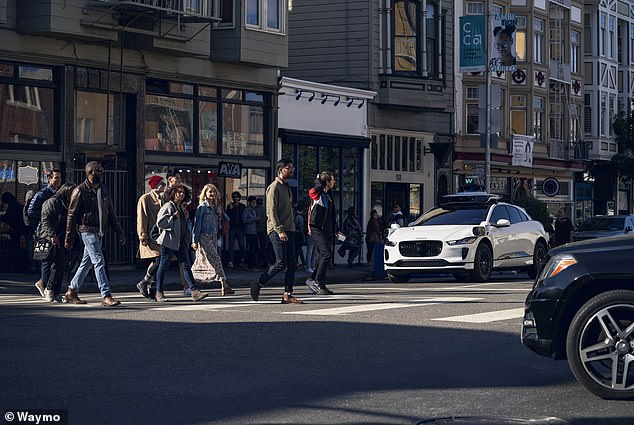
Waymo autonomous cars already operate in San Francisco and Phoenix and will soon land in Los Angeles and Austin
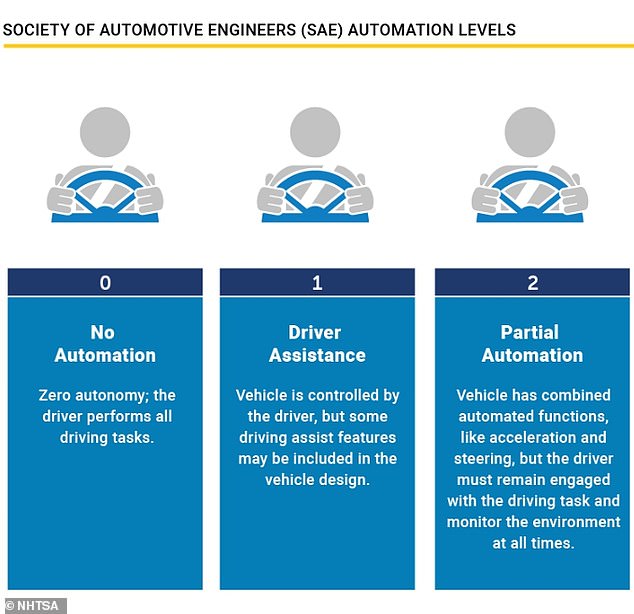
There are six levels of vehicle automation. In the UK, Ford’s BlueCruise is the only designated Level 2 system, meaning drivers can take their hands off the wheel while it is activated.
However, level 4 autonomous cars are already operating in the United States.
Waymo, the ride-sharing company owned by Alphabet, has self-driving cars that you can hail through an app in San Francisco and Phoenix (and soon Los Angeles and Austin).
In late 2023, Transport Secretary Mark Harper told BBC Radio 4’s Today program that self-driving cars would be expected “as early as 2026”.
The King’s November 2023 speech also included the government’s new Automated Vehicles Bill focused on safety and innovation, followed the same month by the announced a £150m government investment in connected and automated mobility (CAM), which will be complemented by a further £150m from industry.
Autonomous vehicles could reach these shores in the not-too-distant future.

Some links in this article may be affiliate links. If you click on them, we may earn a small commission. That helps us fund This Is Money and keep it free to use. We do not write articles to promote products. We do not allow any commercial relationship to affect our editorial independence.


